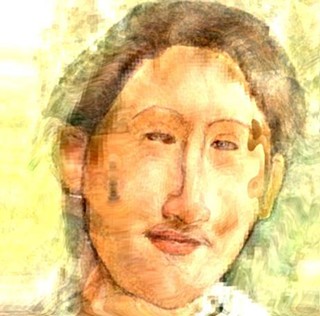The four core members of Chicago's Live Action Cartoonists strive to mix media and performance genres without the help of a kitchen blender. They'll use just about any other kind of technology, though, from laptop computers and digital video to electric guitars to simple markers and ink pens. All of it comes together live, onstage, as you watch.
The group's Web site lists the rhetorical questions, fraught with existential angst, that underlie every show by Live Action Cartoonists:
"In the age of multimedia performance, virtual theatre and online comics, what is the value of having live performers? What is the value of having paper-bound comics? How can technology enhance, not replace, live performances and cartoons? How can old and new technology co-exist in harmony? Addressing these questions, we will create live performances, embracing, not rejecting, the increasing role of technology in art. We will actively incorporate technology and digital media into our performances, combining it with older techniques and vocabulary known to theatre and cartooning."
The group is coming to Tucson Thursday, July 10, to talk about its activities, perform a bit of its old show Science (Fiction), and try out part of its new show, Are You My Negative Space? That's still a work in progress, according to artistic director Natsu Onoda.
"We work with video projection, projecting the image of a mural while we draw it onstage," she says. "We're going camping in Arizona on this trip and recording footage of the desert landscape, from which we'll paint the mural, so it'll be the same scenery presented through two media. The projection will move from an extreme close-up of a cactus or a flower, and then it will zoom out to the full landscape, which is the mural being created on stage, and the two images overlap for a moment."
Out of context, this may not seem terribly exciting, but it's just one component of a show that involves humorous live-action scenes, music and a sequence in which video cameras are trained on the hands of a printmaker at work onstage; that video feed will be mixed in front of the audience with pre-recorded footage of hands performing other tasks, the whole thing projected onto a backdrop.
"It's all about showing processes people never see," says Onoda. "When you go see a film, you never see the film editor at work, just the finished product; here, the person mixing the video is visible from the audience. And when you see an etching in a gallery, you don't know what was involved in producing it, unless you have a background in printmaking like I do. People are surprised by how scientific and tedious the process is. So we bring that onstage and make the process a performance, not a product. You don't get to see the finished print in the scene."
If this seems intellectual and abstract, Onoda is quick to add that the Live Action Cartoonists also regard themselves as down-to-earth political activists, even though they claim not to promote a single political point of view.
"I feel that comics and theater have always been forms that parody and satirize the political climate that we live in, and we can't escape that history," she says. "So this show--Are You My Negative Space?--explores the idea of war and how power 'legitimately' invades other spaces. We were thinking about the attack on Iraq and how we might think about that in the context of a history of war and invasion. And we were thinking about how we don't really know anything about the people who live in Iraq. So Iraq becomes a negative space, an unknown space.
"This show is actually not an attack on anything or an anti-American play," she stresses. "It's a meditation on an idea, almost a critique of our own ignorance. We really try hard not to preach. Our activism is self-critical."
Onoda was born in Japan, and has worked internationally as a playwright, director, performance artist and set director, and has done scholarly work on Japanese postwar cartooning. She's a doctorate candidate in the department of performance studies at Northwestern University in Chicago, and that's where she met the three other core members of the troupe.
Andrew Brommel, the sound designer, is an undergraduate in performance studies and English at Northwestern; he's a veteran of a Midwestern punk-ska band, and his academic specialty is music technology and sound design. Gary Ashwal, the group's executive director, doubles as its video artist; he's spent the past four years creating multimedia performances in the Chicago area, and co-teaches a course in digital media in performance at Northwestern. Alex Thomas, the resident cartoonist, draws a daily strip of limited circulation called "Bottom of the Food Chain," and when he's not doing various cartoon- and illustration-related odd jobs, he plays drums in a rock band.
These are the four people coming to Tucson, although a full-fledged Live Action Cartoonists show may involve a dozen cast members. "We do run into a problem where we have really great performers but they aren't great as cartoonists," Onoda admits.
Onoda herself is not a cartoonist, but cartoon art fascinates her; its Japanese varieties, including manga, may influence some of the work of Live Action Cartoonists. "Our last show was about Osamu Tezuka, the Japanese cartoonist who did AstroBoy, a '50s comic strip," she says. "So it was about AstroBoy, and AstroBoy as a cultural icon, and AstroBoy in relation to Japanese postwar history. So that was a Japanese subject, but I don't know if there's anything Japanese about the aesthetics of the mission of the company. You should ask other company members, because if it's there it just seems normal to me and I'm not aware of it."











